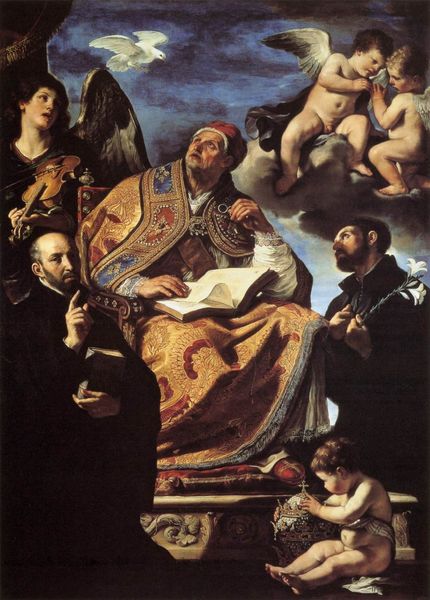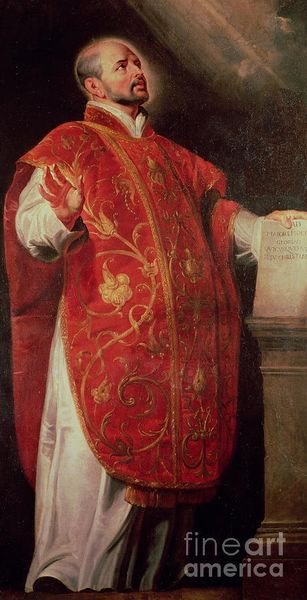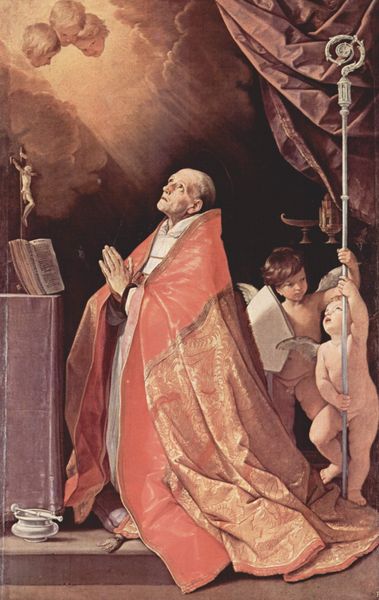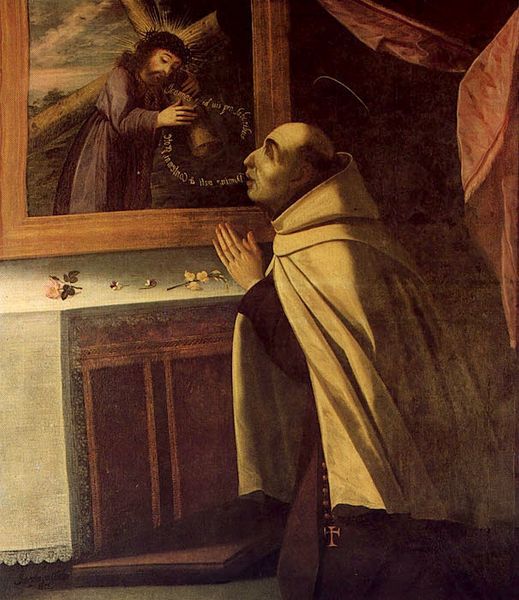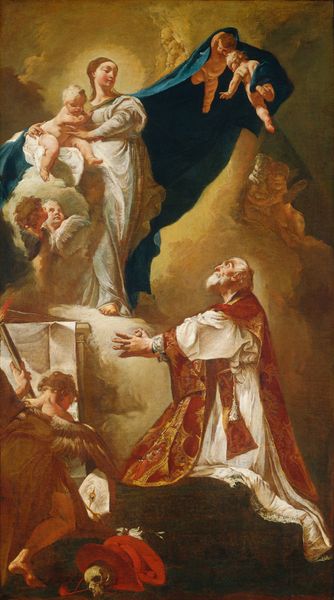
painting, oil-paint
#
portrait
#
allegory
#
baroque
#
painting
#
oil-paint
#
figuration
#
oil painting
#
christianity
#
history-painting
#
italian-renaissance
#
portrait art
Copyright: Public domain
Curator: Let's explore Guido Reni's "St Filippo Neri in Ecstasy," created around 1614 using oil on canvas. It presents a vivid scene that immediately strikes me as quite dramatic in its use of light and gesture. What do you observe, Editor? Editor: The dynamism is unmistakable; the upward gaze, the open hands, the implied ascension. There's a clear visual hierarchy established by the placement of figures, which are composed into diagonal ascending from the bottom left to the upper left. Curator: Precisely. It's important to consider the material and historical context. Reni, a prominent figure in the Bolognese School, was deeply influenced by the Counter-Reformation’s need for art that inspired religious fervor. How might the means of artistic production have played a role? Editor: We might think of the artist's studio as a factory and ask: Who helped Reni produce this devotional artwork, for whom, and for what reward? I believe, Reni's access to high quality pigments, refined oil and linen canvas played no less significant a role than his capacity to understand geometry and anatomy. Curator: Very true, the workshop system undoubtedly influenced the final product. However, if we examine the details within the frame—the delicate rendering of the fabrics and flesh, and of the Lily laying on the floor, are there particular elements that call out? Editor: I'm struck by how the fabric of Saint Phillip's robe directs the gaze towards the face and eyes, drawing us to a concentrated expression and highlighting his contact with divine inspiration. Note that the saint appears on the cusp of the Madonna in the top left. How interesting is the juxtaposition of the Virgin with the fully clothed and very earthly looking Filippo Neri? Curator: The rendering of light, shadow, and color, and the saint's pious expression seem calculated to draw viewers into an empathetic engagement with the subject. I find the depiction of divine presence fascinating. The interplay between the figures and ethereal clouds raises questions about spiritual communication. Editor: From my formalist lens, it's undeniable that this artwork achieves a delicate synthesis of composition, rendering, and expression that contributes to its immediate and abiding power. But where was this synthesis achieved? And how did labor allow it? These are equally pressing questions! Curator: A valuable insight to consider how the art was done is an achievement no less of skillful use and access to valuable raw material! Editor: Indeed. A dialogue well-worth continued.
Comments
No comments
Be the first to comment and join the conversation on the ultimate creative platform.

